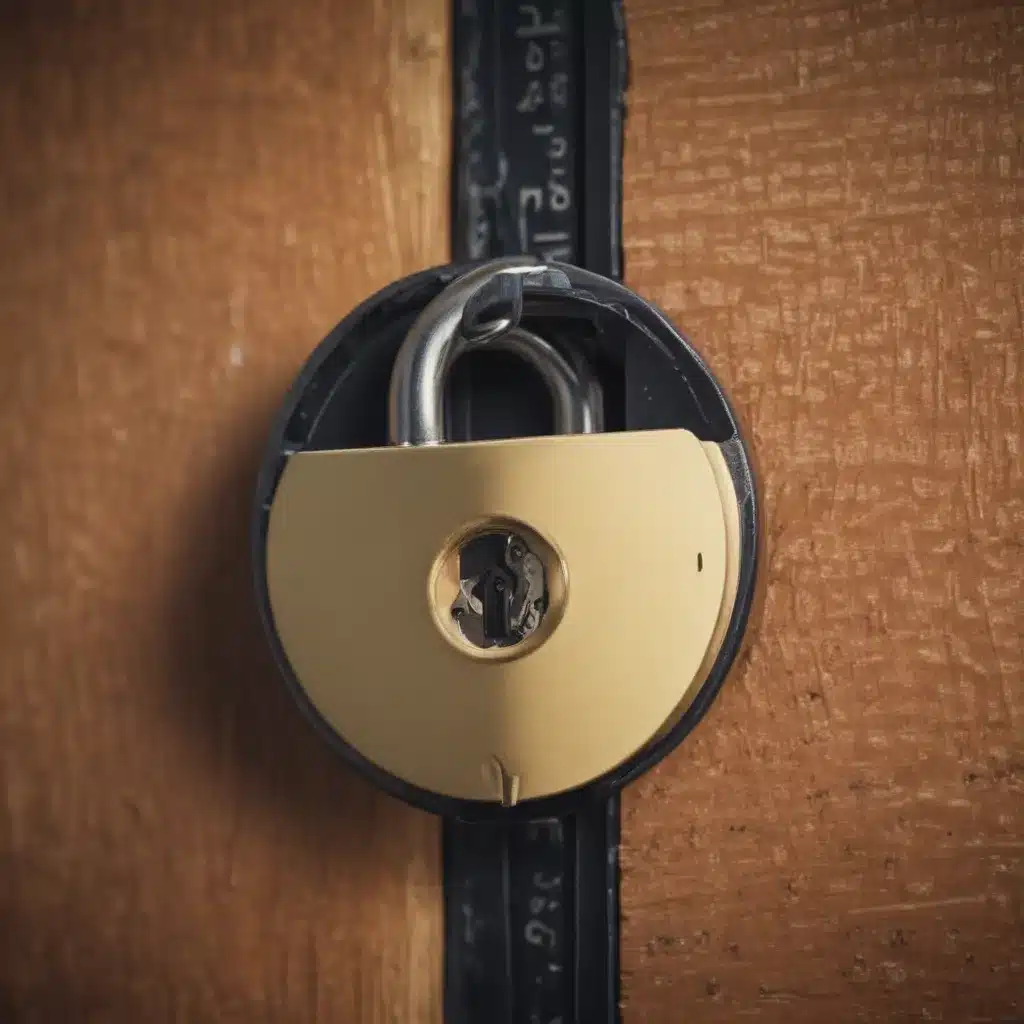The Backup Blunder: A Cautionary Tale
I’ll never forget the day my friend Samantha called me in a panic. Her computer had crashed, and she had lost years’ worth of priceless family photos and irreplaceable business documents. As she described the sheer terror of not being able to access her most valuable digital assets, I couldn’t help but feel for her.
You see, Samantha was one of those people who always meant to back up her files, but life just got in the way. Between juggling work, family, and a never-ending to-do list, finding the time to properly secure her data had fallen by the wayside. And now, she was facing the devastating consequences.
The Importance of Encrypted Backups
Samantha’s story is all too common. In today’s digital landscape, our data has become the lifeblood of our personal and professional lives. From cherished memories to critical business information, the files we store on our devices are truly invaluable. Yet, so many of us fail to take the necessary steps to protect them.
That’s where encryption comes in. By shielding your files with a secure layer of code, encryption ensures that even if your data falls into the wrong hands, the information within will remain hidden and inaccessible to unauthorized users. [1] This is an essential safeguard, especially when it comes to your backups – the last line of defense against catastrophic data loss.
Encryption 101: Unlocking the Secrets
So, how does encryption actually work? In simple terms, the process of encrypting a file involves transforming its contents into a scrambled, unreadable format. [1] This is achieved through the use of cryptographic keys – unique strings of characters that act as a digital lock and key.
There are two main types of encryption to be aware of: symmetric and asymmetric. [1] Symmetric encryption uses a single key for both encrypting and decrypting data, making it fast and efficient. Asymmetric encryption, on the other hand, employs a public key for encryption and a private key for decryption, offering an extra layer of security.
While symmetric encryption is great for handling large volumes of data, asymmetric encryption shines when it comes to secure file sharing and key exchange. Many modern encryption solutions utilize a hybrid approach, combining the strengths of both methods. [1]
Encryption Standards: Protecting Your Backups
When it comes to encrypting your backups, you’ll want to familiarize yourself with some of the industry’s leading standards. [1] One of the most widely recognized is the Advanced Encryption Standard (AES), which is the official encryption standard for the United States government. [1] AES offers robust protection, with key sizes ranging from 128 to 256 bits.
Another popular option is Pretty Good Privacy (PGP), a pioneering encryption protocol developed in the 1990s. [1] PGP uses a combination of symmetric and asymmetric encryption to secure everything from email to file transfers. While it requires a license from the patent holder, Symantec, its open-source counterpart, OpenPGP, provides a free and equally capable alternative. [1]
If you’re using a cloud-based backup solution, chances are it already incorporates industry-standard encryption methods like 256-bit AES. [1] Services such as ShareFile, for example, leverage these advanced protocols to ensure your data is protected during both storage and transfer.
Encryption Best Practices: Safeguarding Your Backups
Implementing effective encryption for your backups is not just about selecting the right standards – it’s also about adopting robust security practices. [1] Here are some key tips to keep in mind:
-
Generate Strong Keys: Use a random number generator to create encryption keys that are at least 128 bits for symmetric encryption and 2048 bits for asymmetric encryption. [1] Regularly rotate these keys to minimize the risk of compromise.
-
Backup Your Backups: Maintain redundant copies of your encrypted backups, and store them in multiple secure locations. [1] This will provide an additional layer of protection against data loss due to hardware failure, cyber incidents, or human error.
-
Embrace Evolving Technologies: Keep an eye on advancements in encryption, such as passwordless authentication and quantum cryptography. [1] These emerging solutions promise to streamline the encryption process while enhancing security.
-
Educate and Enforce: Ensure your employees understand your organization’s encryption policies and best practices. [1] Implement access controls, multi-factor authentication, and other security measures to prevent unauthorized access to your backups.
Conclusion: Unlocking the Power of Encrypted Backups
In today’s digital age, the importance of securing your backups cannot be overstated. By embracing the power of encryption, you can rest easy knowing that your most valuable data is protected from prying eyes and devastating data loss.
So, take a cue from Samantha’s experience and make encryption a priority. Your future self will thank you for it.
[1] https://www.sharefile.com/resource/blogs/file-encryption-101













